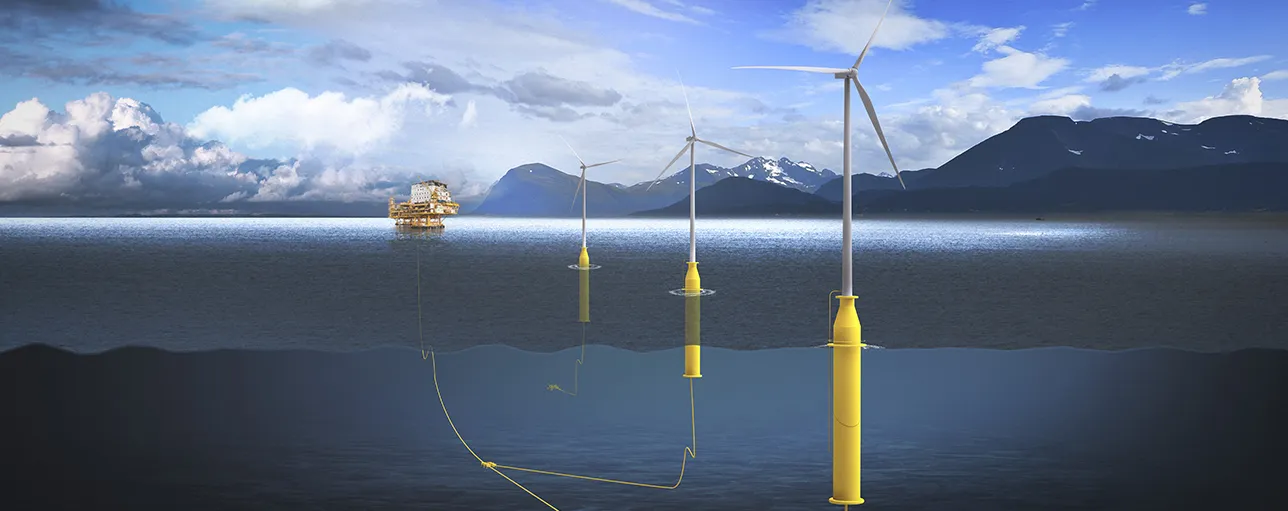The myth that floating offshore wind doesn’t perform as well as bottom-fixed is on its way to being busted. Floating offshore wind has advanced rapidly in recent years. Operating since Autumn 2017, Hywind Scotland has shown promising results with a capacity factor well over 50%. This indicates floating motions do not have a significant impact on gross production or reliability. With WindFloat Atlantic coming online in 2019 and debt financing from the European Investment Bank, it shows that banks are becoming comfortable with a secure and steady operational income from floating wind.
Despite this, challenges remain – most notably cost. The reason for this is two-fold. Firstly, risk: still viewed as relatively new, floating offshore wind carries a higher perception of risk. Involving many new methods and therefore, less experienced contractors, there is naturally more caution, leading to higher contract prices or more risk pushed onto the developer. Secondly, components are generally more expensive. The floater itself is a particularly high capital expenditure item, with the tower, anchors, mooring lines and dynamic cables also incurring significant costs.
Further to the issue of cost is the overall confidence in the industry, with aspects that are still not fully proven. For example, high-voltage dynamic cables have not yet been used on floating wind projects and limited experience exists in the oil and gas industry. Additionally, not enough is known about the effect of major maintenance on production. Tension leg platforms and floating substations have yet to be demonstrated in full-scale projects. Shared anchoring may reduce costs but is a novel technology that will need qualification.
Preparing for the future
So how can we move the industry forward with large-scale floating wind projects? To a large degree, it’s a matter of continuing to reduce risks and make projects more commercially attractive. This can be done by ensuring that the development team and contractors have the right experience, conducting proper site investigations and measurement campaigns, designing according to acknowledged standards and verifying or certifying towards these standards. We also see that full-service EPC (Engineering, Procurement and Construction) contracts are becoming more common which is demonstrating improved confidence from the contractors.
And what about costs? In general, they will go down naturally as experience is gained and supply chain development continues. For aspects not yet fully proven, like using high-voltage dynamic cables, it’s a matter of investing in properly de-risking and qualifying them before or during project design. Once completed on the first project, careful performance assessment will ensure the experience can be used for future projects. It is also important that early projects document their operations properly and, ideally, share their findings to benefit the entire industry.
It takes time
Floating wind will be an important component in the offshore wind industry’s future. In some markets – such as Spain, Japan, Norway, West Coast of the U.S. and island communities – there is limited shallow waters and so floating wind is almost the only solution. In other markets, floating wind will be used more once we run out of sites that can accommodate bottom-fixed wind turbines. We also forecast that in 2040, the price for floating wind will be so low that a site with 0.5 m/s higher average wind speed is enough to counteract the increased capital expenditure of floating wind.
Nonetheless, there is one key factor involved in taking floating offshore wind mainstream – time. It will take time to better understand the risks and give investors the assurances they need. And it will take time to scale up production of components that, today, are set at a higher price. That said, it wasn’t long ago that bottom-fixed offshore wind was viewed as ‘too risky’ and ‘too costly’. That opinion changed quickly! So perhaps the time needed to prove the viability of floating wind might not be as long as one might think.
